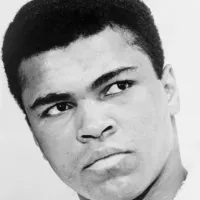Trending

11 days ago James Gunn Plans Superman Sequel Shooting Soon; Teases 'Peacemaker' Role in DCU.
11 days ago Motorcycle crash in Beloit on Cranston Road: Police investigate single-vehicle incident.

11 days ago Zion: Influencers' Storm, Hidden Trail & East Mesa Hike, Views and Fewer Crowds
11 days ago Qatar Airways and Accenture partner for AI-driven aviation excellence, creating 'AI Skyways'.

11 days ago Ketel Marte's Absence and Day Off Requests Cause Frustration Among Diamondbacks Teammates

11 days ago Jamie Lee Curtis Celebrates 'Freakier Friday' with Fan Event and Lookalike Screening
Popular

Gavin Newsom is an American politician and businessman currently serving...

John Bolton is an American attorney diplomat Republican consultant and...

Jupiter is the fifth and largest planet from the Sun...

Muhammad Ali nicknamed The Greatest was an iconic American professional...

Donald John Trump is an American politician media personality and...

George Soros is a prominent American investor and philanthropist As...